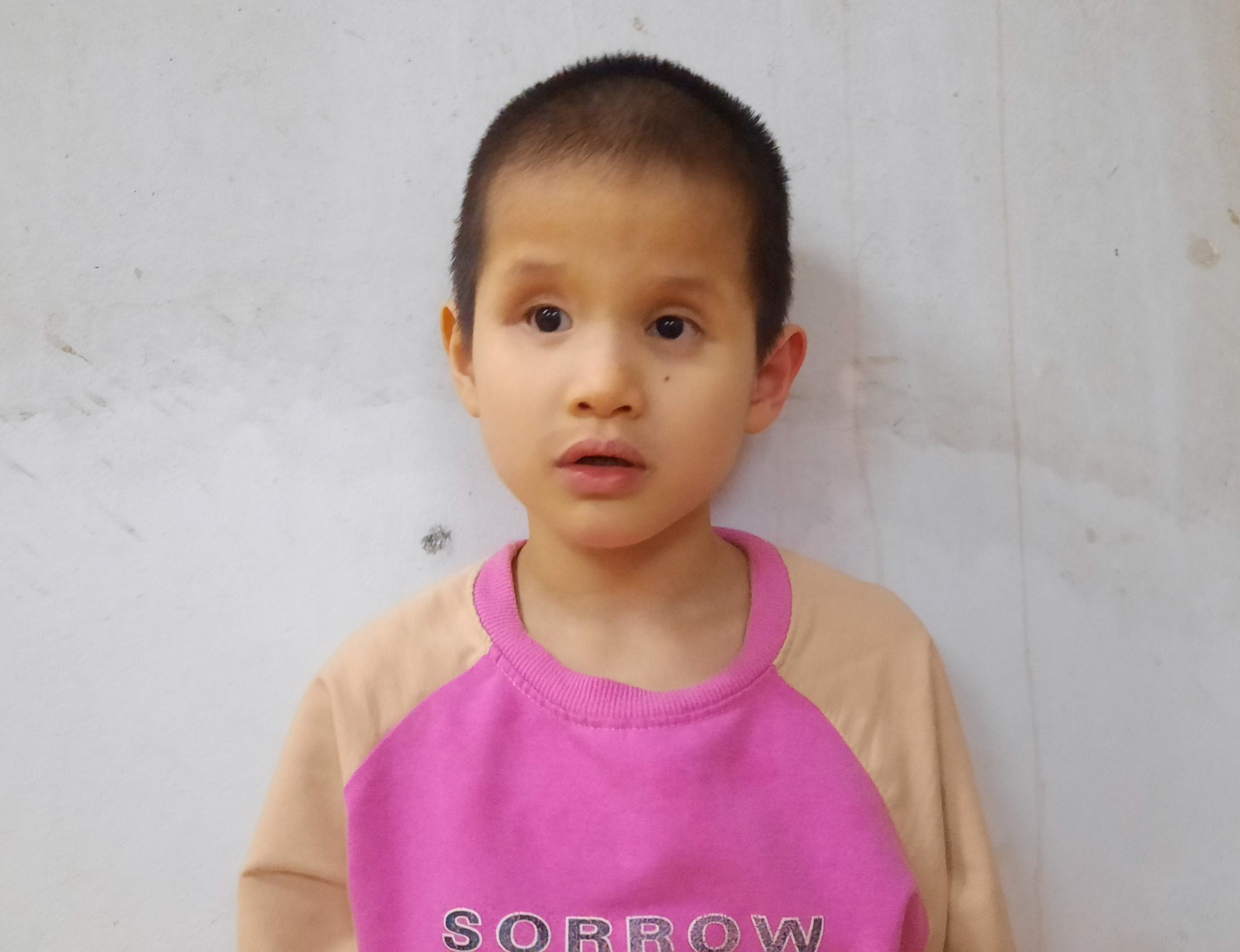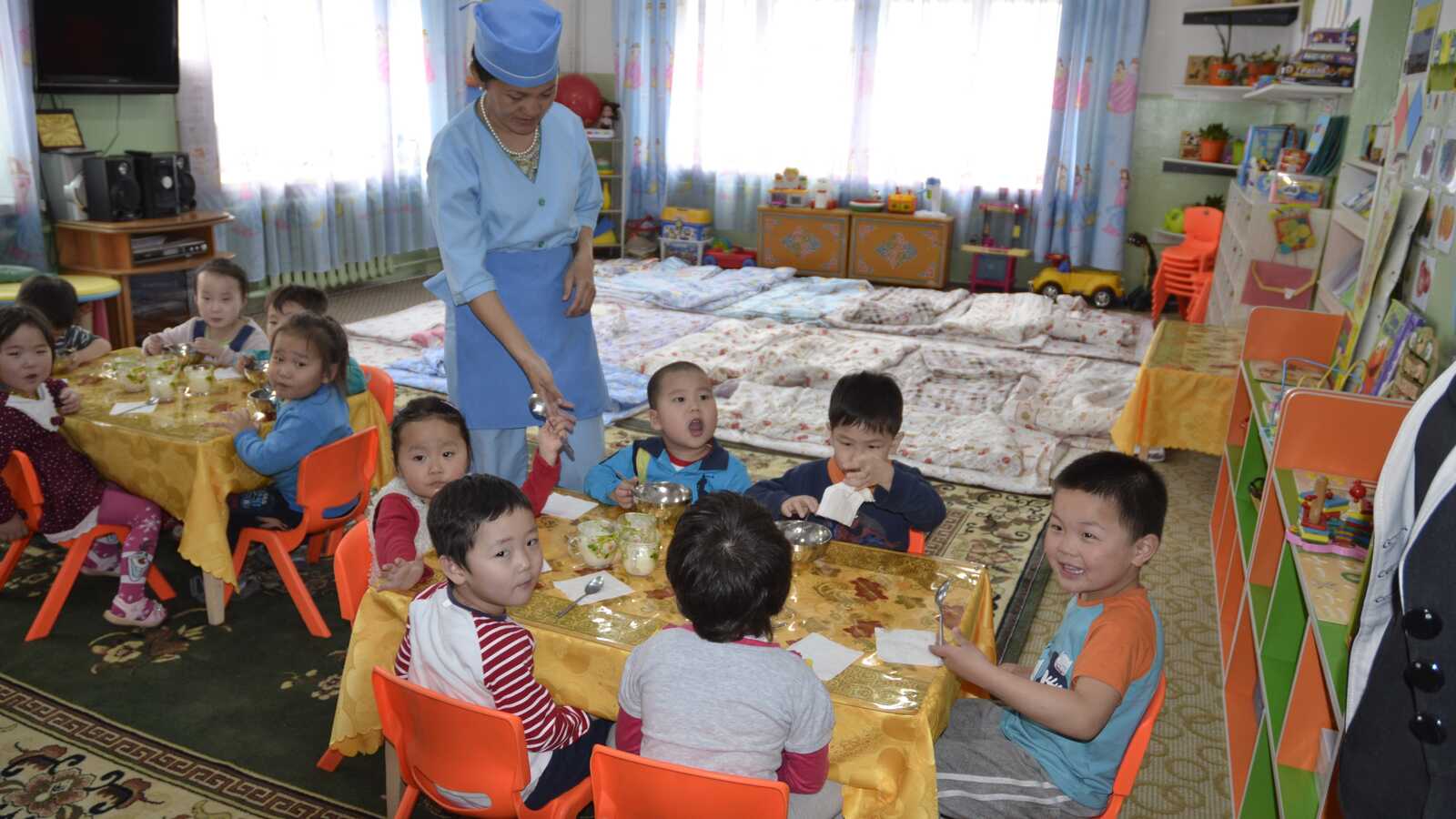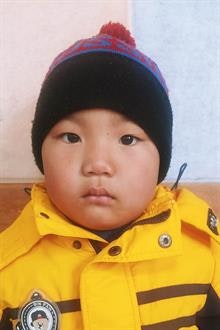The story of the Red Stone School in Mongolia — a sponsor-supported school for children who live and work in a garbage dump.
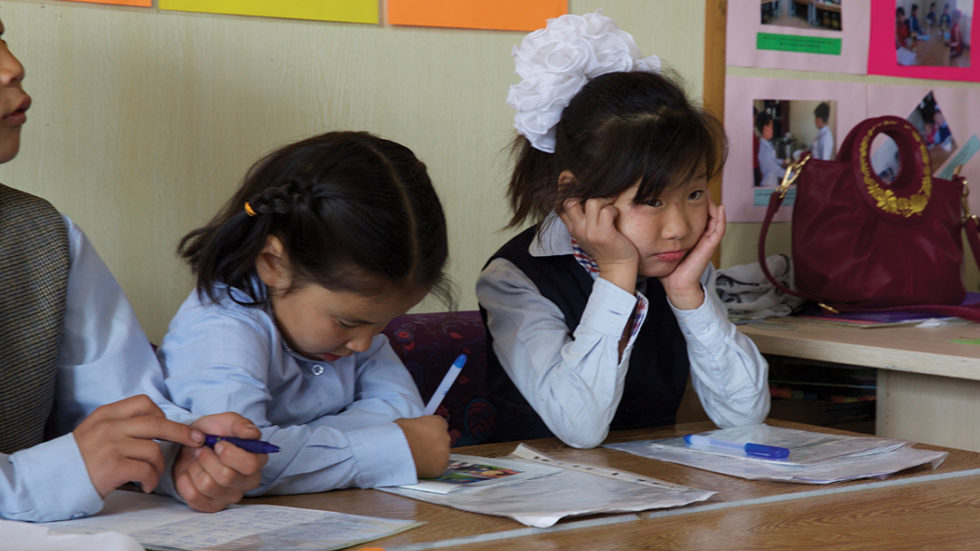
You smell, says the teacher. You can’t wear dirty clothes to school. You can’t learn anything. You don’t belong here.
You belong to the garbage.
On the outskirts of Ulaanbaatar, Mongolia, high above the city at the crest of a hill, a land of discarded waste sprawls over miles and miles, shrouded by a heavy cloud of toxic dust. This wasteland, this dumping ground for a million people’s garbage, is a living place, teeming with animals and people who pick through the refuse to gather whatever they can find to survive. A rotten loaf of bread. A bone with some meat on it. Plastic or glass or metal that can be recycled for money.
To get first pick at the discarded food in the trucks that arrive at dawn, some people sleep here, using cardboard and old tires to block the icy night wind. To stay warm, they burn tires and trash, breathing noxious smoke into their lungs. In winter, when they climb up on the trucks, some of them slip and fall to their deaths. In summer, when it is hot and damp, some of them get life-threatening infections.
Some of them — a lot of them — have known no other life, no other place. They are just children, growing up in garbage.
To Grow Up in Garbage
“Most of the people who live in the garbage dump come from the countryside,” explains Baasandorj Alagaa, who two years ago founded a school — the Red Stone School — for the children growing up in the Ulaanchuluut, or “Red Stone,” landfill. “Either they have lost their livestock or simply they have no work. They come to the city with nothing. They can’t find a job. And their education is zero. They eat from the garbage because that is the only place they can go. And the children are eating from the garbage, too.”
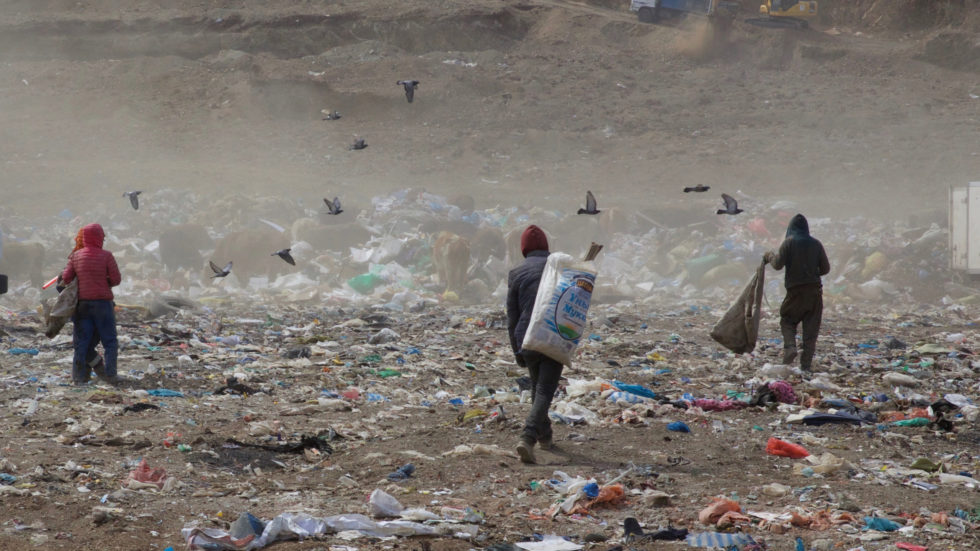
Baasandorj — “Baaska” — is a man in his early 40s, youthful looking in a leather bomber jacket and sunglasses beneath the brim of a New York Yankees cap. At first glance, he seems an unlikely person to have founded a nonprofit organization and an alternative school for children living in some of the worst poverty anyone can imagine. But Baaska’s story is their story. He, too, grew up in garbage.
“I know their life,” he says. “I am one of these children because I was orphaned and I grew up digging in the dump.”
But then one day, after 10 years living in the dump, Baaska decided “that’s enough for me.” He started attending church, and with the help of missionaries, Baaska finished school and then college and ultimately, he earned a master’s degree in social work — hoping to help others who have lived the same hard life that he has.
“I know their life. I am one of these children because I was orphaned and I grew up digging in the dump.”
Baaska, founder of the Red Stone School
“I started going to church in 1998, and my life started changing,” he says. “By going to church, I was able to believe in life, become confident, and that there are still people in this world who love me, who will protect me. While I was going to church, I studied at Ulaanbaatar University, and graduated with a bachelor’s degree in social sciences, and became a social worker. Since then, I established the Red Stone NGO.”
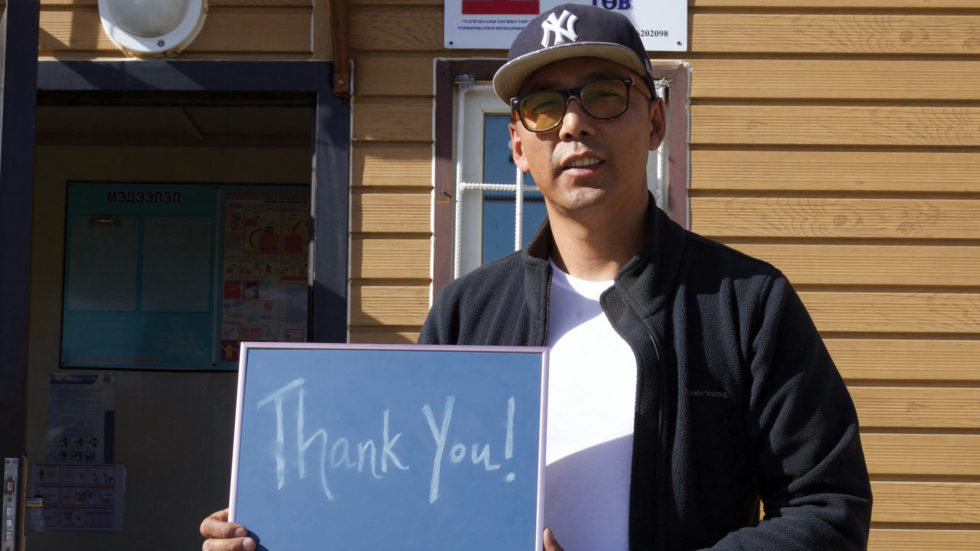
Baaska is humble, and the way he quickly glosses over his educational achievements makes them sound like no big deal — like the only thing holding him back for so long was sheer lack of will. But for children who live and work in the dump, attending school is no easy feat.
There are no yellow buses to come pick them up from the dump and drive them the three miles to the nearest school. Because many of their families migrated from the countryside, they can’t register to attend one of Ulaanbaatar’s public schools — schools that are already overcrowded, with kids attending in 4-hour shifts of 50 or 60 students to a class.
“They get teased at school by the other kids. They get teased because they smell, they do not wear nice clothes, their hair looks dirty or because of the supplies they use… And not only students, but the teachers sometimes say to the kids that they should not be going to school with dirty clothes. They can’t learn. They belong to the garbage.”
Baaska
Even if they could register their children, expenses like books, uniforms and supplies are well beyond the means of families who dig through trash for a living. Reliable shoes are another expense that parents can hardly afford, and in winter, when temperatures dip to 40 degrees below zero, they worry about their children getting frostbite on the long walk to school.
Some children overcome these obstacles, trudging through ice and snow in flimsy, filthy clothes just to get an education. But what they face inside the classroom is in some ways far worse than any of the other roadblocks that stood in their way.
“They get teased at school by the other kids,” explains Baaska. “They get teased because they smell, they do not wear nice clothes, their hair looks dirty or because of the supplies they use… And not only students, but the teachers sometimes say to the kids that they should not be going to school with dirty clothes. They can’t learn. They belong to the garbage.”
A New Way of Life
Munkhbold was nervous for his first day of school. He was 9 years old, but had never attended school before. Most days, he tagged along with his mom to the garbage dump and helped her dig through the trash — hoping to find food or recyclables, which would typically net them between 1200-1500 tugriks, or 60 to 75 cents, per day. For Munkhbold, his parents, his three siblings and his grandma, home was a cramped summer shed, converted from an old wooden caravan, with uneven slats that let in daylight and dust and, in winter, frigid cold air.
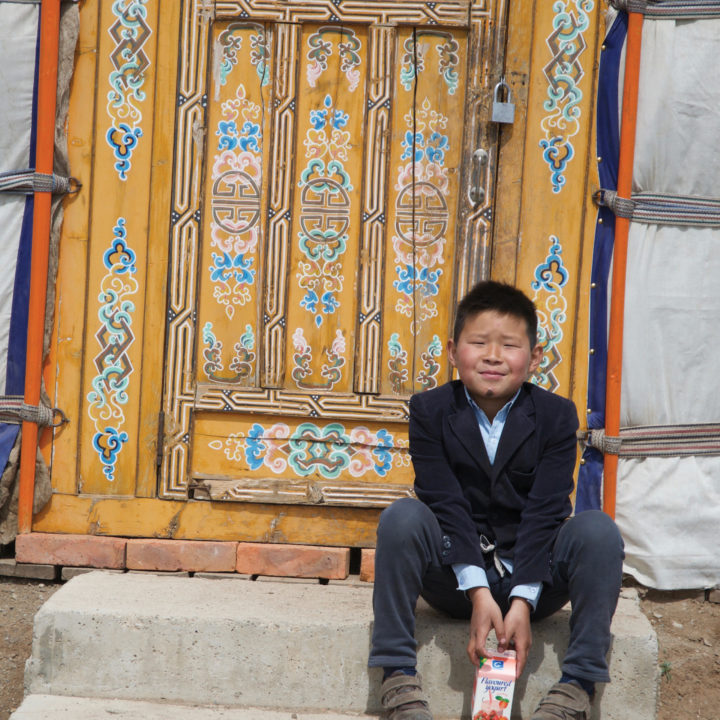
A woman in her 30s, Munkhbold’s mom grew up in the countryside before moving to Ulaanbaatar in search of work. “I wanted to get a job,” she says, “but I couldn’t because I wasn’t qualified for anything.” Like many people coming of age in Mongolia after the fall of the Soviet Union, Munkhbold’s parents found themselves ill prepared to find work in the new market economy.
“When I first heard about the school, I didn’t want to go. It was scary. I’d never been to school before. But my mom said, ‘You’re going to school.’”
Munkhbold
They grew up expecting an altogether different way of life — a life in the country, herding livestock or working on collective farms subsidized by the Soviet Union. But after the Soviet collapse, subsidies ceased and communal structures broke down. When Munkhbold’s mom moved to Ulaanbaatar, the only place she could earn a daily wage was in the informal economy of the Red Stone landfill.
“I was 17 at the time, which was about 13 years ago,” she says of the day she moved to the dump.
The next year, she had a daughter. And then a son. And then two more children. But only her eldest daughter attended school for a time, dropping out before the second grade. She’s 12 now, and last year, she started the first grade over at the Red Stone School.
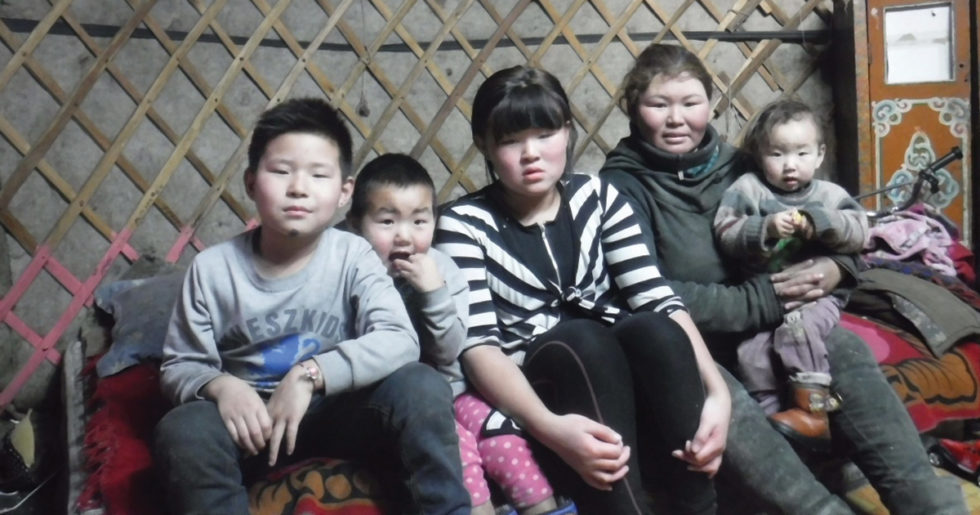
“I went many places to find jobs and because of that, I moved my kids outside of regular school districts for some period of time,” says Munkhbold’s mom, a warm and earnest woman who closely resembles her 12-year-old daughter.
Munkhbold’s mom tells us that she has an eighth-grade education, while her husband, who occasionally works as a builder, finished seventh. Now that her kids have an opportunity to go to school, she is determined to give them an education beyond what she and her husband received. So on a day last September, instead of joining their mom at the dump — a place no child should ever be — Munkhbold and his sister nervously walked down the hill from their home to a place called the Red Stone School.
Generations of Change
The Red Stone School sits inside an iron fence on a patch of land a half a mile from the dump. It looks out over low, rolling brown hills sliced by riverbeds that freeze over in winter, and build up trash in summer. Deforestation during the Soviet era stripped the hills of trees and plants, and in their place are thousands of plastic trash bags that floated down from the dump after being picked clean of their contents. When the winds kick up in late spring, the bags whip and spin through the air in colorful storms of smoke and dust. But on a still sunny day, through the barred windows of the Red Stone School, they glisten like diamonds on the hillsides.
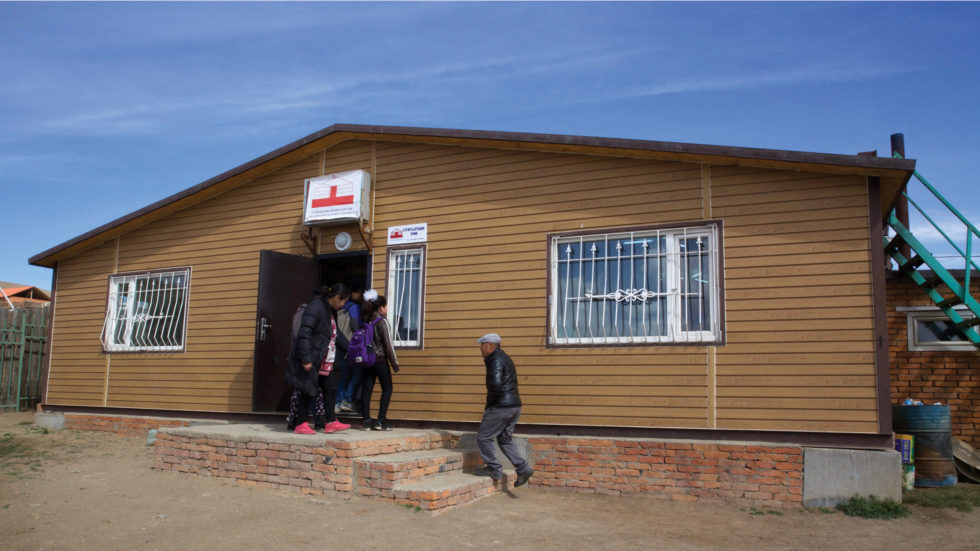
On his first day of school, as Munkhbold walked along the edge of the trash-strewn ravines, he dreaded what it would be like. Would the other kids be nice to him? What would he have to do? Would it be warm? But as he stepped inside the classroom, he began to feel differently about this place so different from anyplace he had ever been.
“That was a great day. I made some new friends,” says Munkhbold, a stout guy with a charming smile and a birthmark on his chin that earned him the nickname “beard” among his new friends.
At school, he ate lunch every day — a lunch he didn’t have to scavenge from the garbage dump, a lunch that just appeared before him, steaming hot and delicious. He learned about “recess” — a time designated just for play, with a basketball court and lots of games waiting for that very purpose. Munkhbold already knew how to read, but for the first time, at school, he would learn how to write. He received a navy blue uniform, neat and pressed with a blazer and button-down shirt. He discovered that he really likes math, he says. And what he most looks forward to — his favorite day at school — is when they serve dumplings. “When we were at the dump, we ate what we found,” he says. “Some days we ate a lot. Some days, we didn’t eat at all.”
“When we were at the dump, we ate what we found. Some days we ate a lot. Some days, we didn’t eat at all.”
Munkhbold
The promise of daily hot lunch is one of the biggest draws to the Red Stone School, and when we visit on an afternoon in early May, the children line up to fill their bowls full of chicken, rice and shredded carrots. It’s a dry, 30-degree day outside, and the chill wafts in the hallway. But once inside, the heat from the furnace keeps the classroom toasty warm. The walls are lined with educational posters and artwork created by the children, and textbooks sit open on their desks.
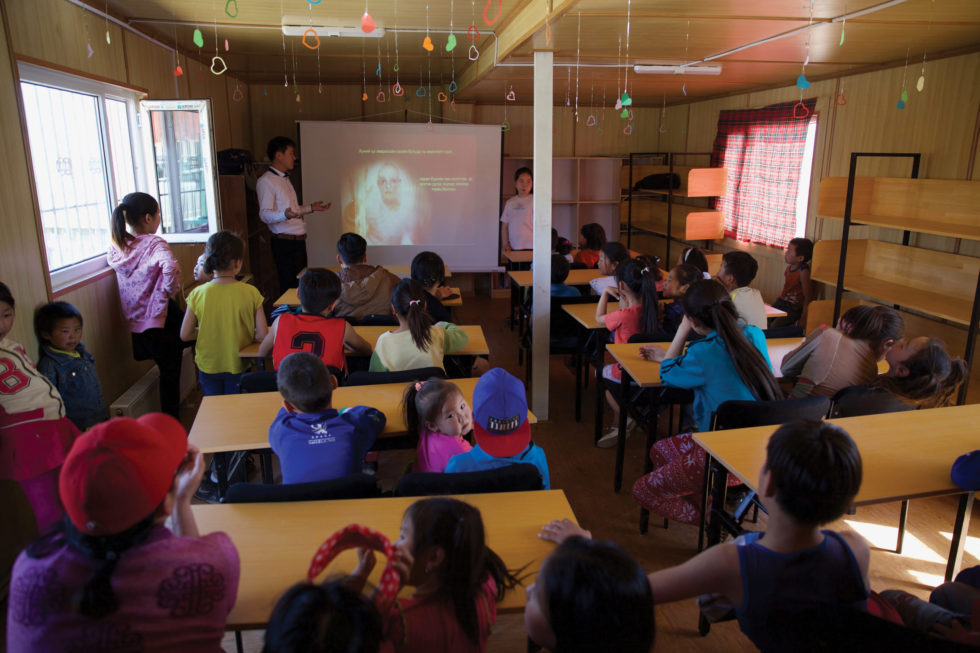
When Baaska first opened the Red Stone School two years ago, only seven kids showed up for class. The school at the time consisted of two industrial shipping containers welded together, and his nonprofit couldn’t afford heat, regular meals or textbooks for the kids. When winter came, attendance quickly dropped off. But when the staff of Holt Mongolia learned about the Red Stone School, and what Baaska was trying to do for the children in this community, they immediately reached out to Paul Kim, Holt’s U.S. director of Korea and Mongolia programs.
“This is why I love working in this country,” Paul says, as he surveys the grounds of the school. “There are so many individuals like [Baaska] who have the heart and drive, but don’t have the funding because Mongolia is a poor country. There is an amazing opportunity to create a huge impact here.”
For years, Holt Mongolia has worked to empower families living in Ulaanbaatar’s most impoverished district — a district home to around 65,000 people, including those who live in and around the Red Stone dump. In these communities, monthly donations from Holt sponsors have helped struggling parents, often single mothers, meet the most critical needs of their children. For these most vulnerable families — families who have in many cases migrated to the city after losing their livelihood in the country — Holt sponsors now provide the safety net that disappeared along with their traditional way of life.
“Mongolia is traditionally a communal culture,” explains Paul, who has worked with Holt’s Mongolia program since it formally began in 2000. “Extended families and nomadic groups would support members of their communities, and provide care for any person or family in need. However, with urbanization, those traditional safety nets are gone, and the government does not have the funding or the systems in place to provide care to these children and families in need.”
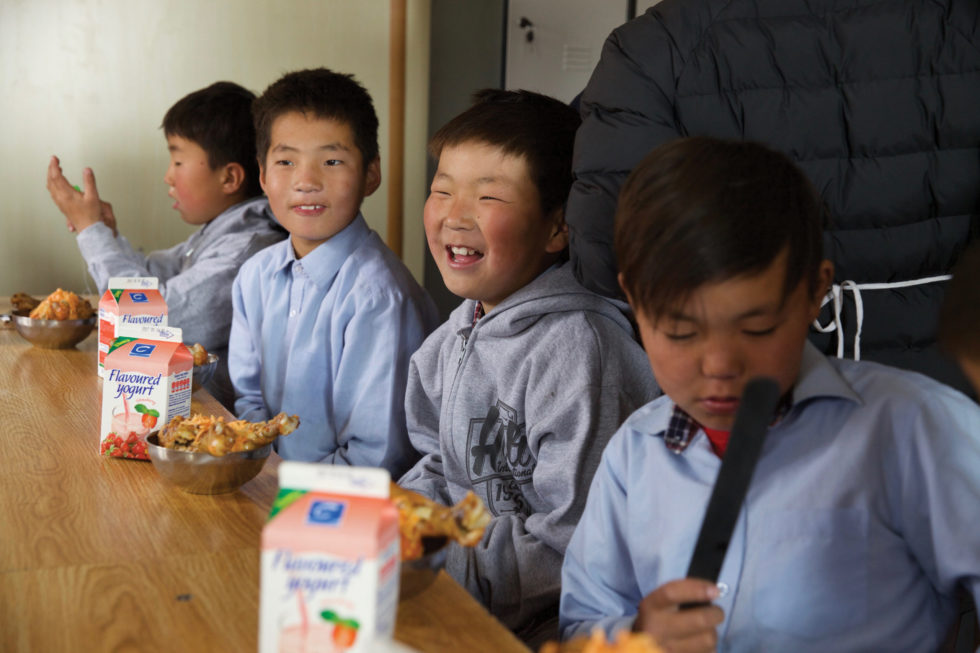
This year, with the support of Holt sponsors and donors, over 1,000 children in nearly 400 families in Mongolia will receive food, shelter and warmth — basic support that helps keep families together, and provides a stable foundation to rebuild their lives.
But in every country where Holt works, we never work alone. Always, we seek opportunities to partner with local leaders who know their communities best.
“Throughout the history of our organization, our most successful programs have been built upon collaboration with local partners and governments,” says Paul. “They are the most aware of the places with the greatest need, which are frequently hidden from the eyes of outsiders, and just as importantly, they know of what is in the hearts of those we would serve.”
By partnering with a local leader like Baaska, we not only meet immediate needs, but empower children in this community to lift themselves and their families out of poverty — and out of the dump.
As Paul says, “Our partnership with the Red Stone School will impact children and families in this community not only today, but will continue to ripple out through each successive generation that follows.”
The Impact of Sponsors
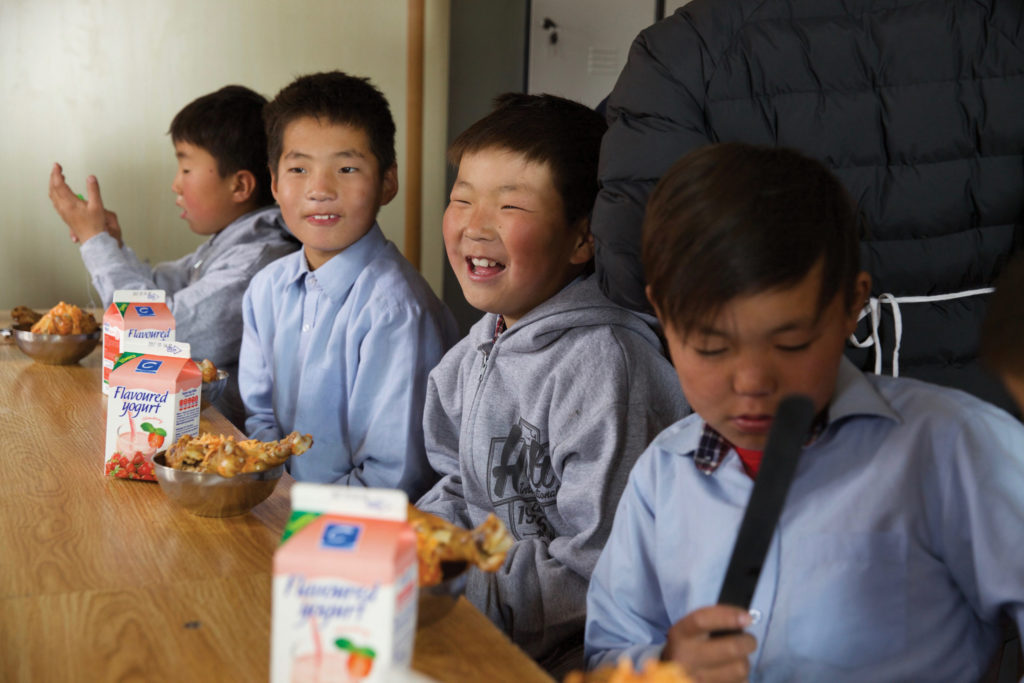
In October 2016, Holt sponsors began supporting Red Stone students through monthly donations that would cover the cost of books, school supplies, salaries for teachers, daily hot meals and, most critically, heat. With support from sponsors and donors in the U.S., Baaska and his team built a two-room schoolhouse, combined the shipping containers into a large room, installed a furnace and will soon build an enclosed shower and toilet so that the children can take hot showers — a luxury that many of them have never before experienced.
In this, the poorest district in Ulaanbaatar, families will often go months at a time without bathing. Public baths often deny service to families from the dump, and many of the children suffered from chronic lice, ticks or skin issues when they first came to the Red Stone School. But on the cold day in May when we visit, they look like the healthiest, most beautiful children in the world — a change that is in no small part due to the compassion and generosity of their sponsors.
“With the help of sponsors, we can see with our eyes the progress we are making in providing education to these children, which encourages us all. Such generous help and support gives us a belief that anything is possible for these children.”
Baaska
“With the help of sponsors, we can see with our eyes the progress we are making in providing education to these children, which encourages us all,” says Baaska. “Such generous help and support gives us a belief that anything is possible for these children.”
Much like the public schools in Ulaanbaatar, Red Stone can only accommodate a limited number of children at a time. At present, 40 children attend the Red Stone School in two shifts of a little longer than four hours each day. But the school is open every day of the week, with special weekend activities for the kids held inside their converted shipping containers. Baaska hopes to convert this structure into a library and another classroom, and wooden shelves now line the insides, waiting to be filled with books.
“They haven’t been standing still,” Paul says. “They have kept working.”
Donors continue to raise funds to provide more for the kids, and during our trip, we deliver a washing machine, dish cabinet and lockers for the kids to store their belongings.
“I am very, very happy and so thankful to Holt sponsors and the organization for helping all our kids,” Baaska says when we visit, alongside a team of Holt donors who traveled with us to build new homes for some of the most vulnerable children and families in the Red Stone community — including Munkhbold and his family, who now no longer live in a wooden shed.
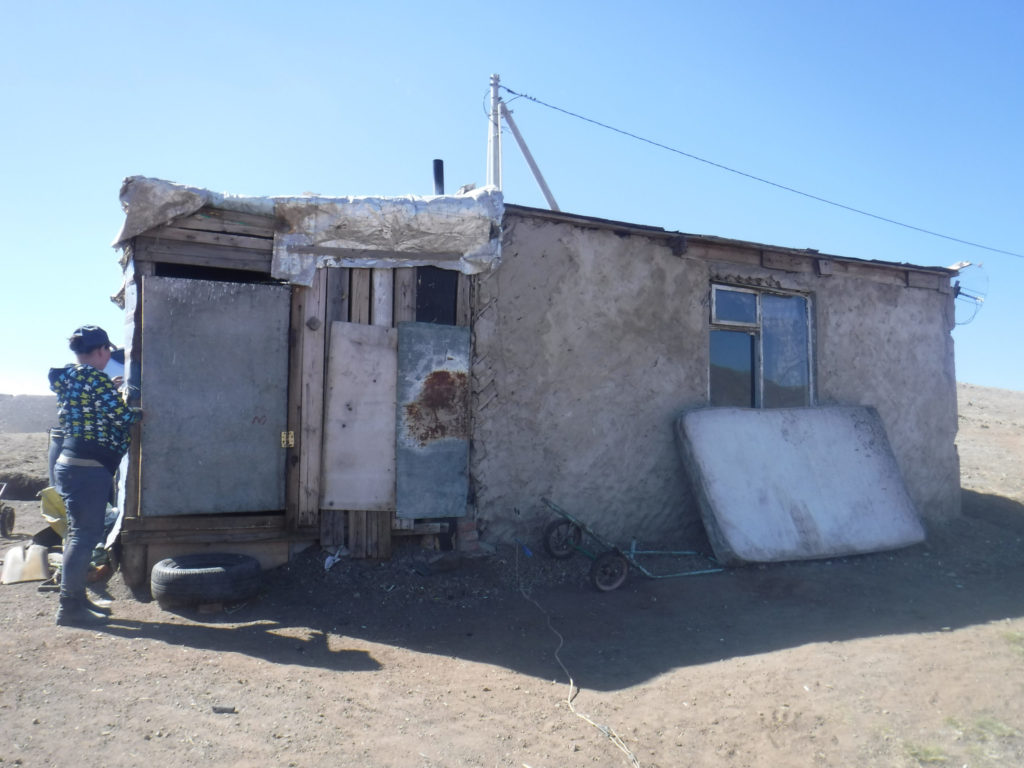
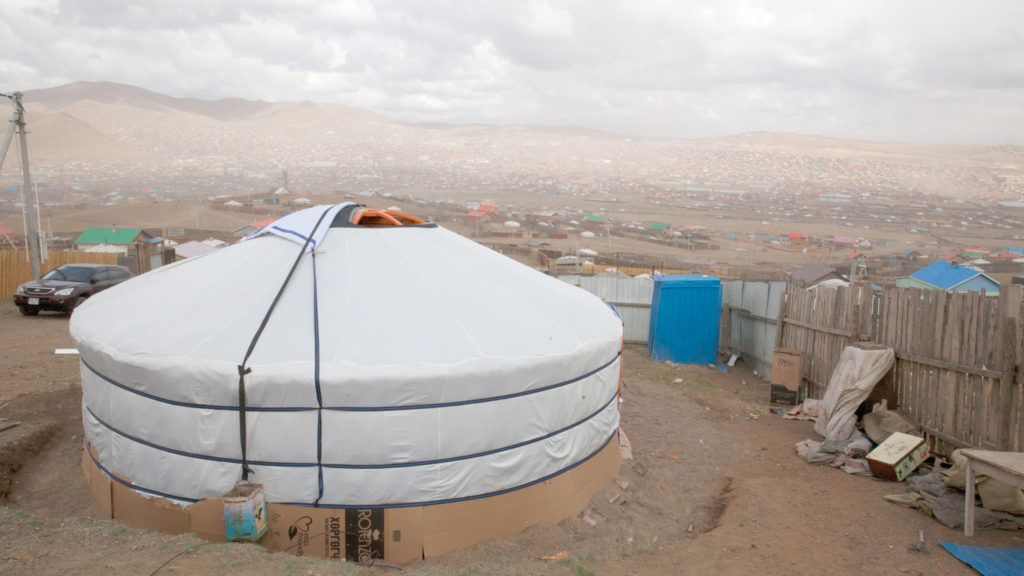
With this group of donors, Baaska shares that he feels like he can finally relax now that he has so many “brothers and sisters” to help care for these children — children who he and all the teachers and staff at Red Stone love like their own family. When Baaska came down with a life-threatening illness a few years ago and could not afford the expensive treatment, he tells us that the children came together to collect recyclables so they could save his life.
“When they gave me the money, it amounted to about $3.70,” he says. “My eyes were filled with tears. That they love me as much as their parents was beautiful.”
Inspired by the children, Baaska eventually raised the funds to cover his medical costs and today, he is more motivated than ever to continue growing the school. He is not content to stand still.
“Next to the dump there is a large graveyard and children live there, too,” he says. “My dream is someday we have a school big enough for all the children from both the garbage dump and the graveyard. Why can’t we build a school for over 1,000 children or more? That’s the size of my dream. We don’t have the funds for that. Not yet. But I can dream.”
What the Future Holds
During our visit, we ask Baaska what sort of future the children who graduate from the Red Stone School will have to look forward to. They will have an education, but will they have opportunities? Before responding, he looks down and thinks for a moment, holding his Yankees cap in his hands.
“I have a chat with the kids a lot, tell them my life story,” he says. “They all ask me, ‘How can I become like you?’ But I tell them that they can be better than me.”
Although Red Stone is not a certified school, the children can graduate with a GED. And once they do, they are eligible to enroll in college. The cost is high, but Baaska has already connected with local universities and several have expressed interest in providing scholarships for Red Stone graduates.
“I have lived this hard life, and I had this opportunity to provide these kids with education,” he says.
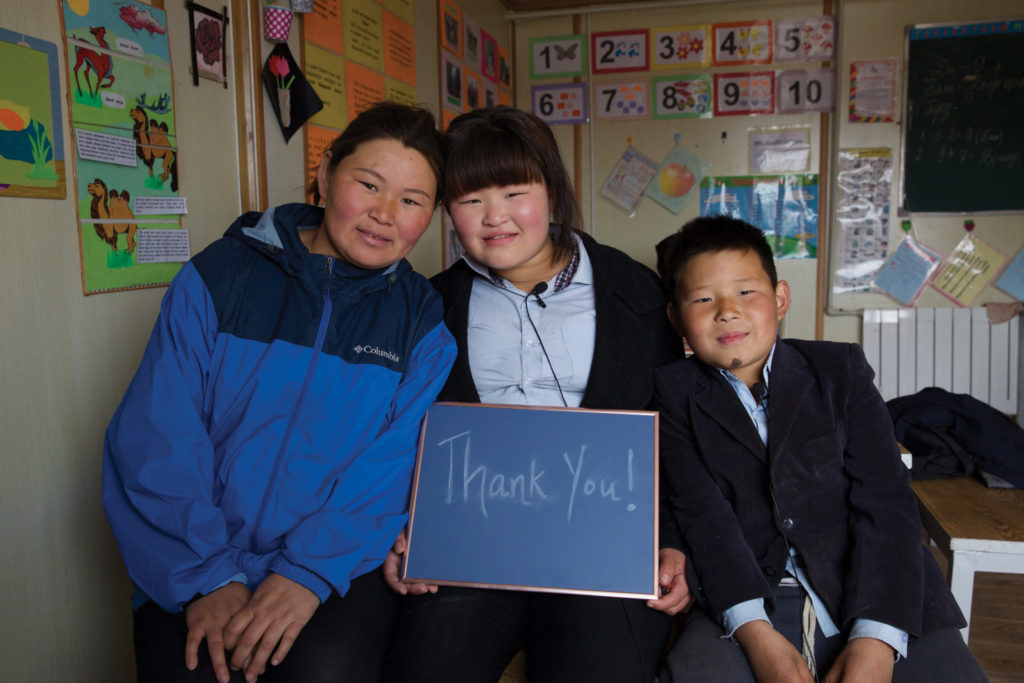
Seeing how his life changed, Baaska has faith that here now, in this sanctuary of hope and peace amid a land of wasted dreams, are future scientists, presidents and scholars. For these children — children who Baaska once feared would not live to see their 20s, children who are now so loved and protected by all of their brothers and sisters in Mongolia and in the U.S. — anything is achievable.
“The children who grow up in the garbage don’t have any dreams,” he says. “But if we can educate them, they can dream big.”
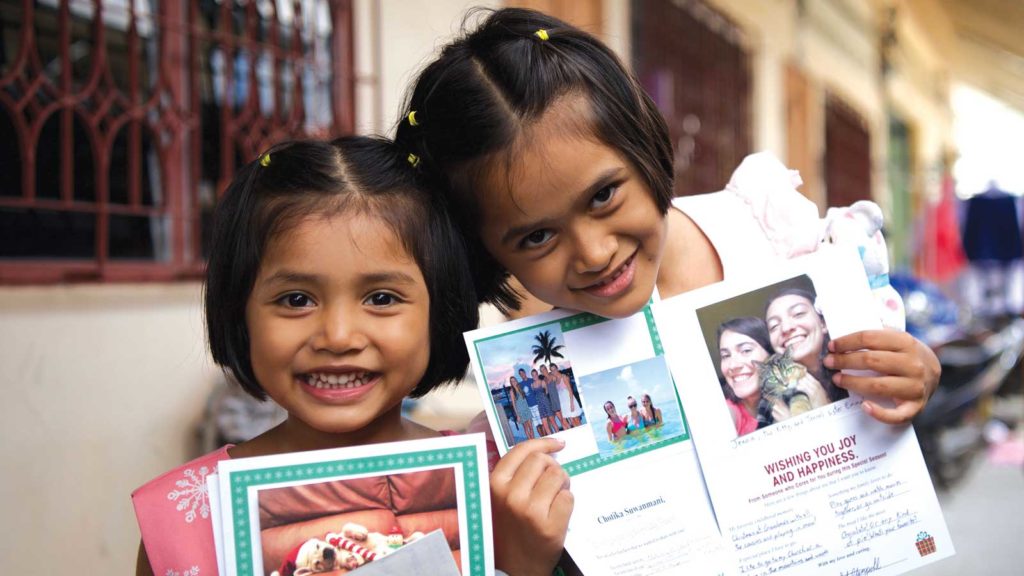
Become a Child Sponsor
Connect with a child. Provide for their needs. Share your heart for $43 per month.

